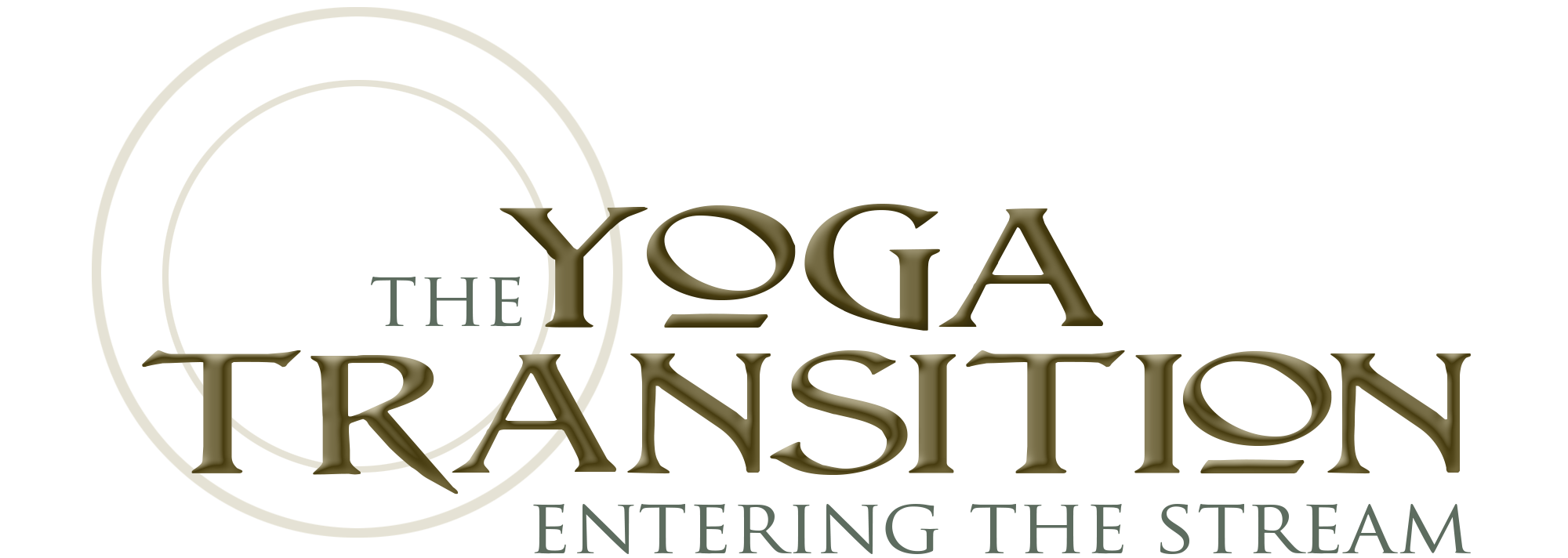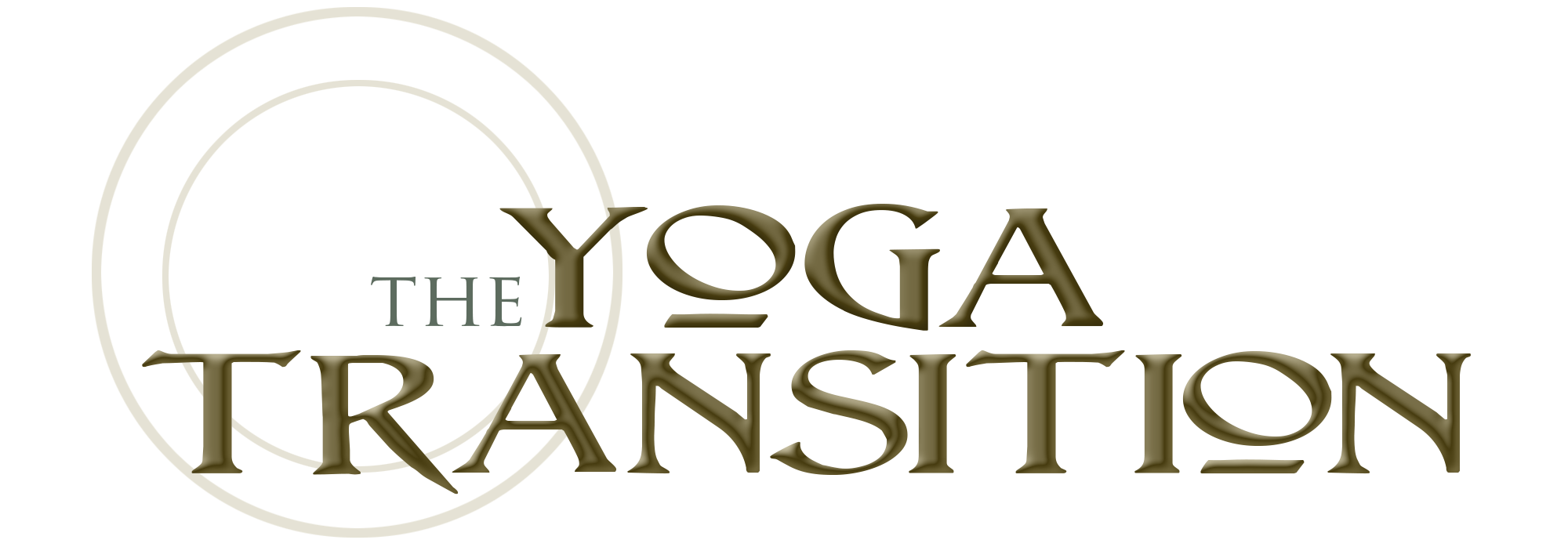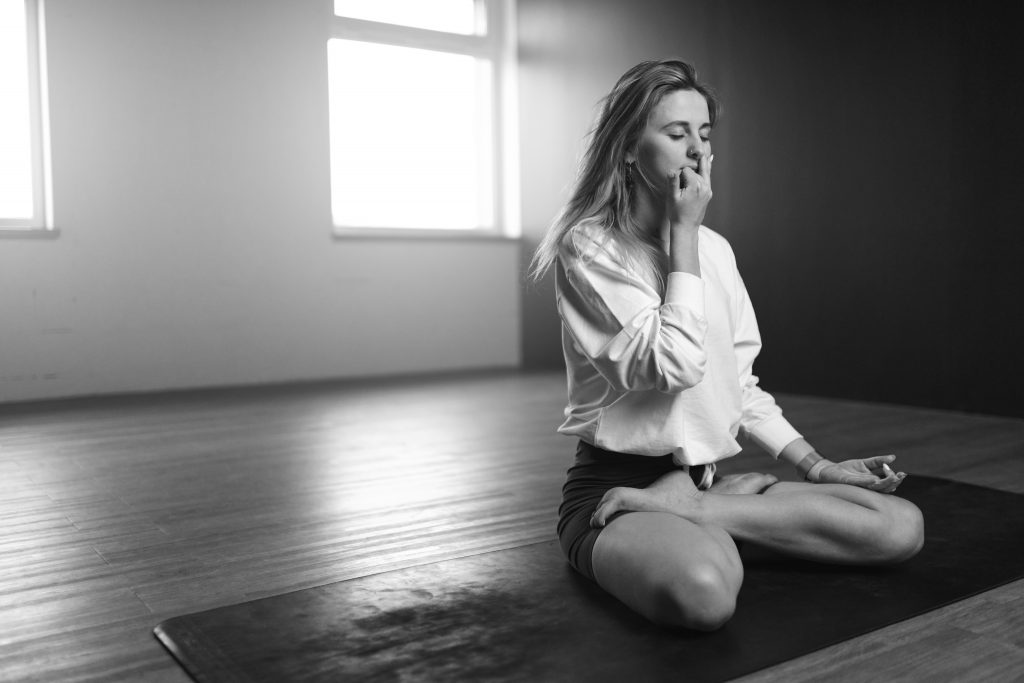
Pranayama Breathing
Pranayama breathing refers to the practice of breathing as set out by the ancient Hindu texts such as Patanjali’s Yoga Sutras and the Bhagavad Gita, with the Sanskrit meaning of prana being “vital life force”, and yama “to gain control” – pranayama is often translated as “to elevate the prana shakti (life energies)”. When practised skillfully, pranayama is one of the most transformative of the yoga practices and will radiate health and composure into one’s everyday life.
As one of the eight limbs of yoga, pranayama is a central component of the yoga practice. Despite its importance, there are only a small number of yoga teachers who understand the science behind breathing, and the significant impact that breathing awareness and instructed breathing cues can have on the physical and mental health of our students.
The Yoga Transition covers this relationship between pranayama breathing and yoga in our mentorship guidance program. Our experience has shown us that before any pranayama can be effective we must begin with the identification of dysfunctional breathing patterns of which many of our students have. As teachers it is essential to teach healthy day-to-day breathing as a foundation so that the real fruits of a dedicated pranayama practice can then follow.
Contact us to find out more.
How do you teach pranayama breathing?
Pranayama generally refers to specialised seated breathing exercises that have varied intentions such as anuloma viloma, alternate nostril breathing. Then, as a different application, we have the breath impositions that we use within the asana practice, such as instructing the breath to be deep or small, light or soft.
While many yoga teachers learn different techniques of pranayama, including variations on the full yogic breath, in their initial training, often two very important learnings are left out:
- What does a normal healthy day to day breathing pattern look like?
- How can you educate your students to breathe during asana in a way that will cultivate physiological health and therefore wellbeing?
Thanks to our unduly stressed, busy lifestyles, it is estimated that around 80% of people have poor breathing patterns. The dysfunction that most people experience is that they are hyperventilating, which means breathing too much for the body’s metabolic requirements at a given moment. You may observe this in your clients – common symptoms of dysfunctional hyperventilating are mouth breathing, sighing, always trying to catch their breath, or nasal congestion.
Many yoga teachers advocate for ‘big breathing’, encouraging their students to breathe deeply and often quickly, that is, they are further encouraging their students to over-breathe. However, to breathe in such a way is very harmful to our physiological wellbeing. As many knowledgeable yoga teachers already know, hyperventilation, over-breathing, is incredibly harmful as it causes a stress response in the nervous system – activating the fight or flight response, increasing anxiety, depleting the oxygenation of cells, and reducing sleep quality. Healthy breathing is not deep breathing but rather a breathing rate and depth that is appropriate to the body’s metabolic needs at that time. If the heart rate is not elevated, it is not appropriate to increase the breathing volume or rate. The most important features of the breath in asana are diaphragmatic, nasal breathing that is small volume and slow.
At The Yoga Transition, we guide teachers to help their students cultivate healthy breathing patterns after which they can progress on to the transformative pranayama techniques. Through our mentorship program, we elaborate in detail the characteristics of functional breathing and help teachers fine tune their own breathing habits so they can then pass this knowledge on to their students.
“Why less is more” when it comes to yogic breathing
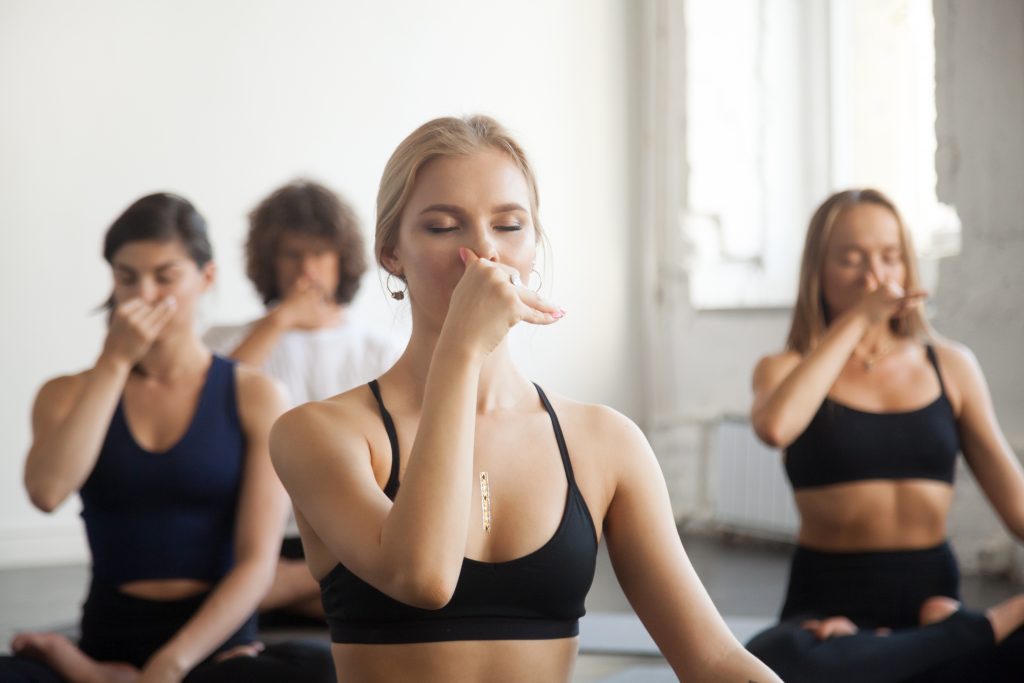
The yoga sutras highlight the link between ‘citta’, the mind, and ‘prana’, the breath, or vital energy.
In the Hatha Yoga Pradipika, the classic fifteenth-century Sanskrit manual on hatha yoga, it is wisely said that “When prana moves, citta moves. When prana is without movement, citta is without movement.” – echoing this thought, the Patanjali Yoga Sutras say “the state of yoga reflects the cessation of movement within the mind”.
As such, one primary goal of pranayama is the opposite of big breathing; instead focusing on the settling of the breath. Breath, according to these ancient texts, is to be gently uncurled like a delicate thread, subtle and prolonged, and kept close to the body.
Our approach to teaching yogic breathing
At The Yoga Transition, we educate client teachers on how to recognise which of your students are hyperventilating (hint: it’s most of them), and how to adapt your breathing cues so that your students will develop a more functional, healthy breathing pattern. This helps shift the physiology from fight or flight dominance, into the parasympathetic – the calm phase of the nervous system.
In regards to pranayama practices, in order for practitioners to benefit in the intended way from practising pranayama, the foundational functional breathing pattern must first be addressed.
We also cover the relationship between the primary and secondary breathing muscles; how they create stability of the asana form and how they can be used to cultivate mobility, particularly of the spine. Rather than limiting your breathing cues to “inhale and exhale”, we will teach you a detailed understanding of how the respiratory muscle biomechanics actually create and sustain the posture.
Deepening our knowledge and observation of how the breath works in asana leads us to a subtle and powerful understanding of how the energetic lines in the posture get created and channelled; this shifts our experience from the physical body into the pranic energy body, the breath being the link, the access route. Developing your understanding of the breath is a tried and tested pathway to taking your asana practice to a more intimate and refined level.
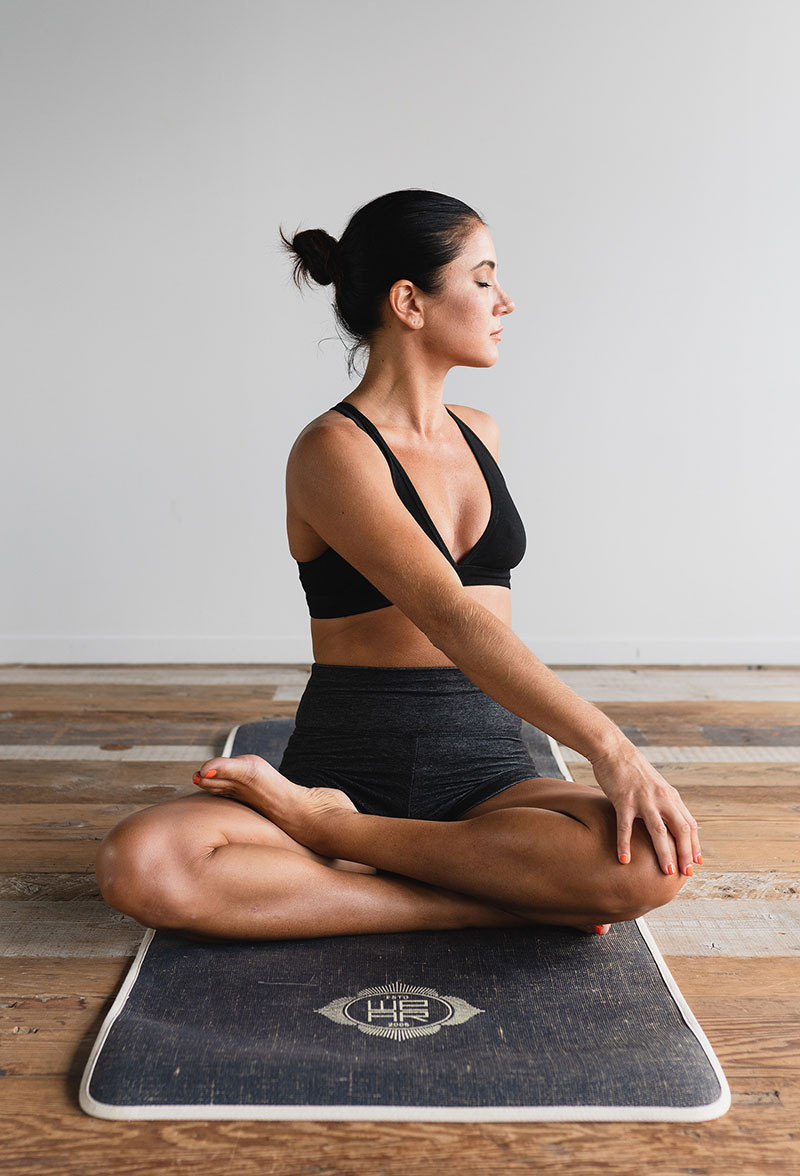
An overview of the breathing modules we teach
Our yoga teacher mentorship program covers a number of topics relating to the breath in asana and the relationship between breathing and yoga including:
- Observation skills – Teachers must learn to identify dysfunctional breathing patterns in students so they can instruct healthy, functional breathing as a starting point.
- Hyperventilating – Most students will be hyperventilating (over-breathing), so the breathing instructions in asana must encourage less breathing to normalise the breathing pattern, and to shift the nervous system to the parasympathetic.
- Ujjayi breathing – Ujjayi breath (also known as “the ocean breath”) must be even, balanced, quiet, gentle, and even on inhale/exhale. The more subtle and gentle the ujjayi, the more the mind will be drawn inwards towards the breath. Loud ujjayi breathing is too gross, and is a misunderstanding of the true goal of this style of breathing.
- Pranayama practices – Developing breath ratios within asana that then serve the progression of pranayama practices, particularly around creating energetic shifts.
- The health benefits of breathing correctly – Healthy breathing is foundational to yoga and asana as it affects the physical health, physiological health and mental, and emotional health of the practitioner, so professional yoga teachers must understand what healthy breathing is to support wellbeing. From that base the tremendous benefits of pranayama can be sought.
- Biomechanics of breathing – The direct relationship between the biomechanics of the respiratory muscles and the stability/mobility paradigm within asana.
- Directional flow and the energetics of the breath – using the breath to influence energy channels that cultivate alignment and stability in the postures.

Why consider mentorship
Mentoring with a master teacher provides you with a clear path to professional development. You will receive personalised guidance on topics ranging from your personal practice, to your teaching skills, to how to move forward with your yoga career.
Most yoga teachers begin their yoga journey in a particular style or tradition, such as Vinyasa or Iyengar. This is useful as the formula of a particular style gives a clear structure to the learning. Then as one’s yoga journey continues, it is common to dabble in different yoga styles and to become curious about previously unexplored aspects of the practice. As the yoga path continues to evolve, we find our own blend – a style of practice and teaching that is unique to our own interests and knowledge that we have accumulated over the years. At this stage, mentoring is at its most effective, guiding and honing to help the teacher find their own voice, to express their individuality, and discover their interpretation of yoga. Working with a yoga mentor will help bring structure and clarity to their unique offering to their students.
Seize the opportunity for personal and career development and to share in Susan Allen’s 20 years experience running multiple yoga studios, teacher trainings, immersions, and retreats.
Develop your yoga teaching style with mentorship
Your initial teacher training would likely have touched on basic yogic breathing methodology, but it’s impossible to gain a deep understanding of such a broad topic in a short amount of time. In addition to yogic breathing, there are a vast number of teaching elements we help our professional yoga teacher clients develop.
- Steering your practice and teaching in the direction that most interests you
- Encouraging you to discover your unique voice
- Guiding you to develop a teaching methodology that has both integrity and individual authenticity.
Once you have completed your initial teacher training, contact us to find out how mentorship can bring you to the next level.
